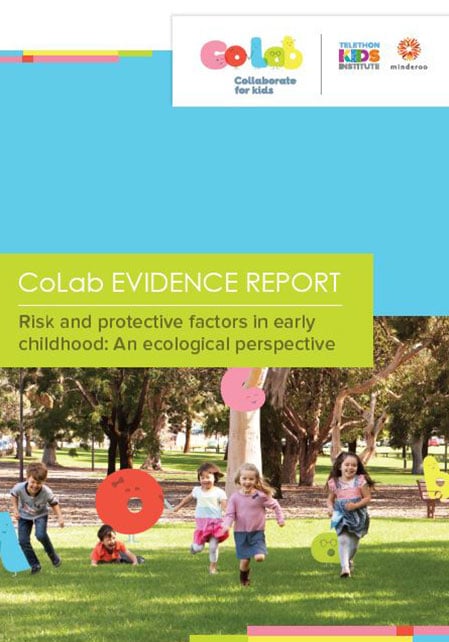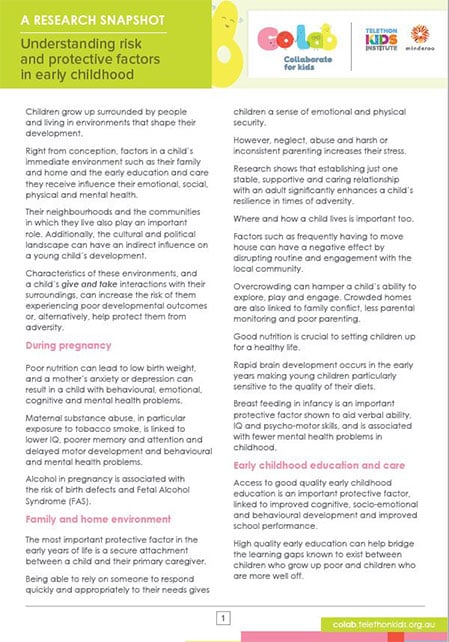Early childhood development occurs within the context of multiple environments, with a vast range of factors in these environments exerting influence on different aspects of a child’s development.
As proposed by Bronfenbrenner, the ecological perspective is concerned with the characteristics of the multiple environments in which a child develops, and how these shape different aspects of his/her development. Characteristics that increase the probability that a problem will be formed, maintained or exacerbated are called risk factors; characteristics that appear to moderate and/or minimise the impact of risk are called protective factors. Research shows that some children develop along ‘normal’ trajectories despite the presence of risk factors; this capacity to achieve developmental milestones and avoid disorder in the context of adversity is called resilience.
Evidence Report
Early childhood development occurs within the context of multiple environments, with a vast range of factors in these environments exerting influence on different aspects of a child’s development. This Evidence Report discusses the potential for the characteristics of these environments to increase the risk of a young child experiencing poor developmental outcomes or, alternatively, to enable protection from the impact of adversity. An Ecological Model of Child Development is outlined, and the key factors influencing development in a child’s immediate contexts are summarised, including: the prenatal environment, the family and home environment, and early childhood education and care.
Read this Evidence Report for an in-depth look at risk and protective factors in early childhood.
Read the Evidence ReportRisk and protective factors
Read the Evidence Report
Research Snapshot
Children grow up surrounded by people and living in environments that shape their development. Right from conception, factors in a child’s immediate environment such as their family and home and the early education and care they receive influence their emotional, social, physical and mental health.
Read this Research Snapshot for a quick look at understanding risk and protective factors in early childhood.
Read the snapshotRisk and protective factors
Read the snapshot


